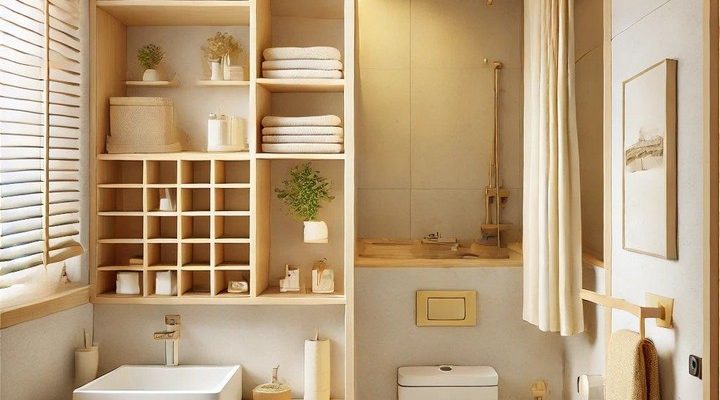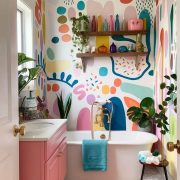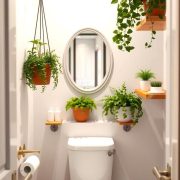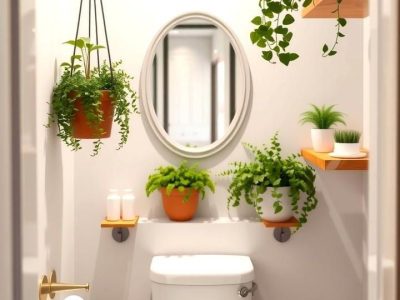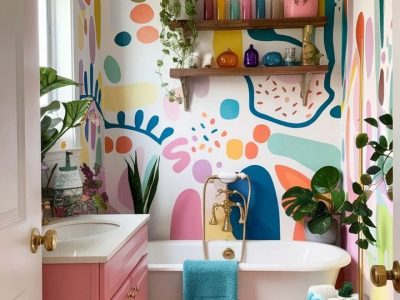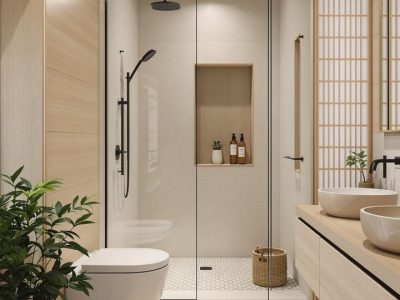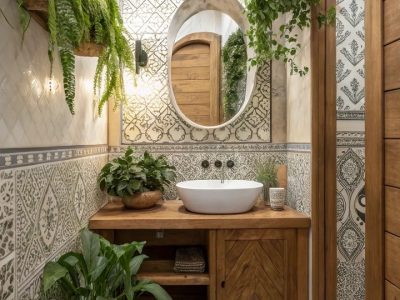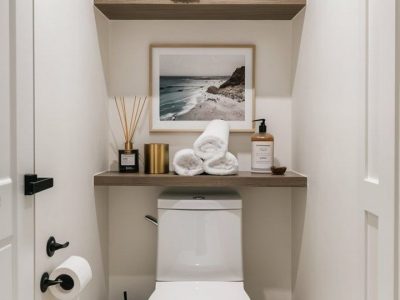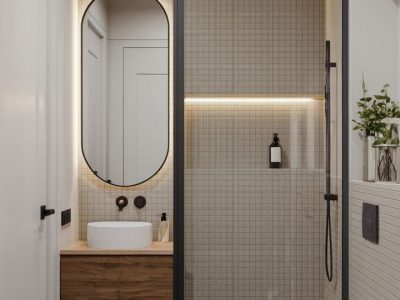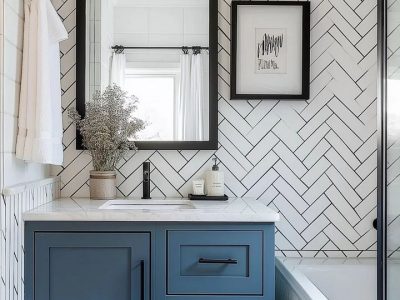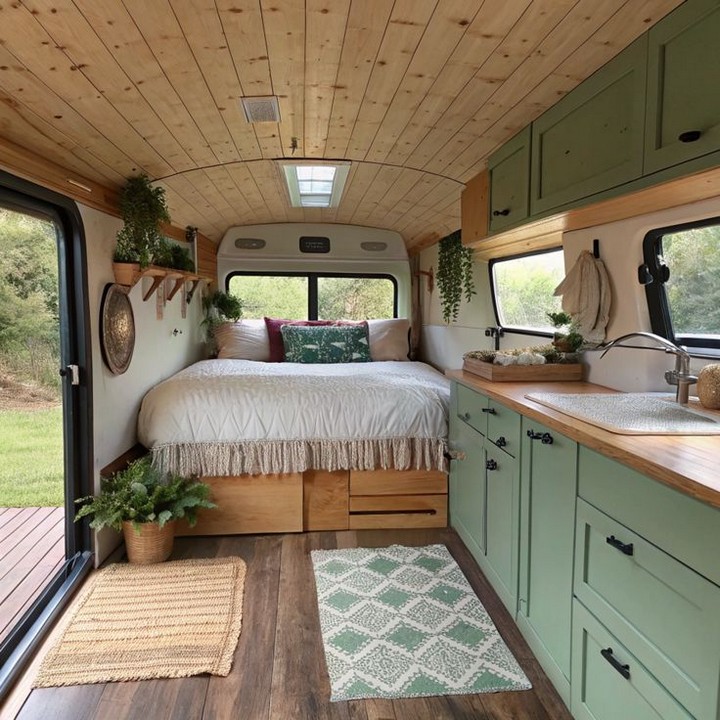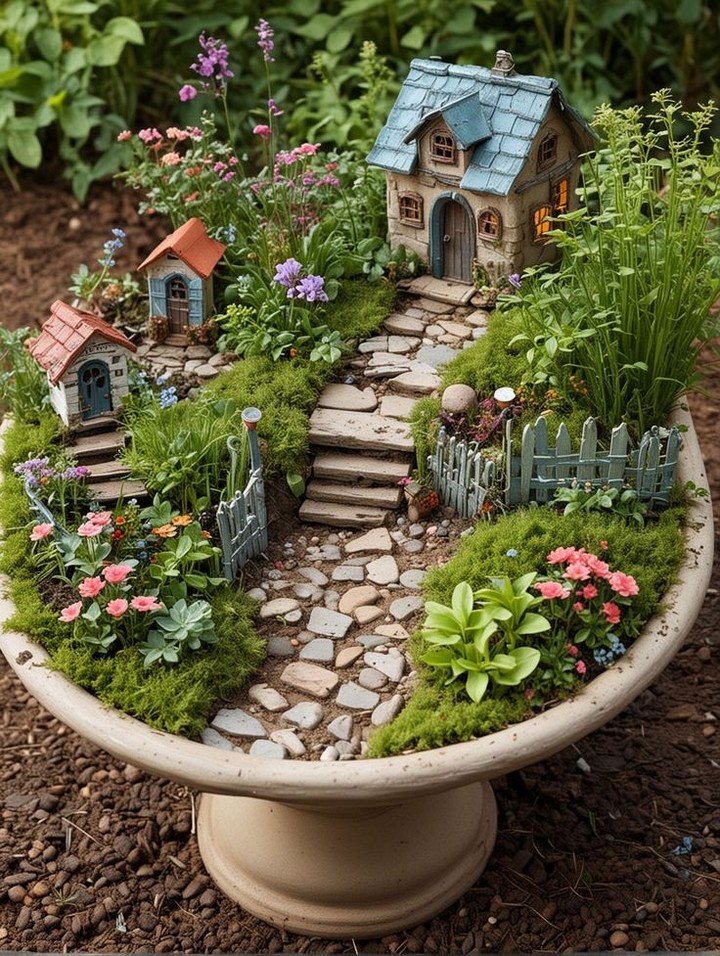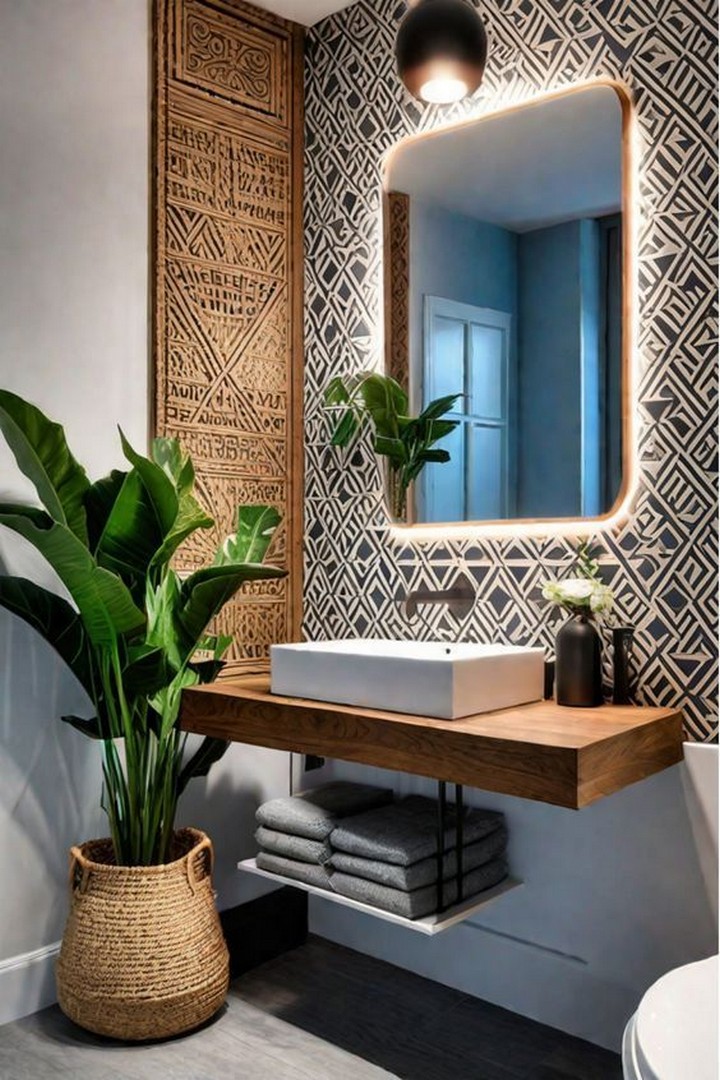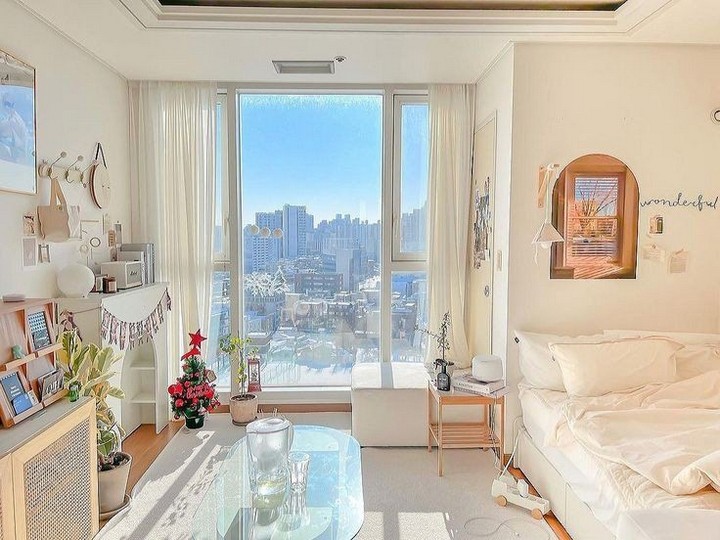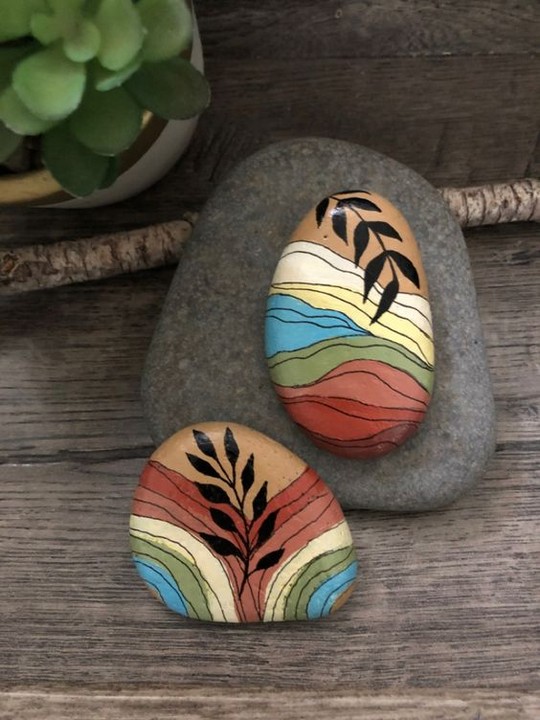Transform your compact bathroom into a serene sanctuary with these thoughtfully curated minimalist design ideas. Small bathrooms present unique challenges, but embracing minimalist principles can create an illusion of spaciousness while promoting tranquility and functionality. Whether you’re renovating or simply refreshing your space, these ideas will help you achieve a clean, organized, and visually appealing bathroom that feels larger than its actual dimensions.
Minimalist bathrooms do more than just look good—they actively contribute to mental well-being. The absence of visual clutter reduces cognitive overload, creating a space where the mind can truly relax. Research shows that organized, clean environments can lower cortisol levels and improve focus. In a bathroom, where we begin and end our daily routines, this calming effect becomes particularly valuable for setting positive intentions for the day ahead.
1. Embrace Neutral Color Palettes
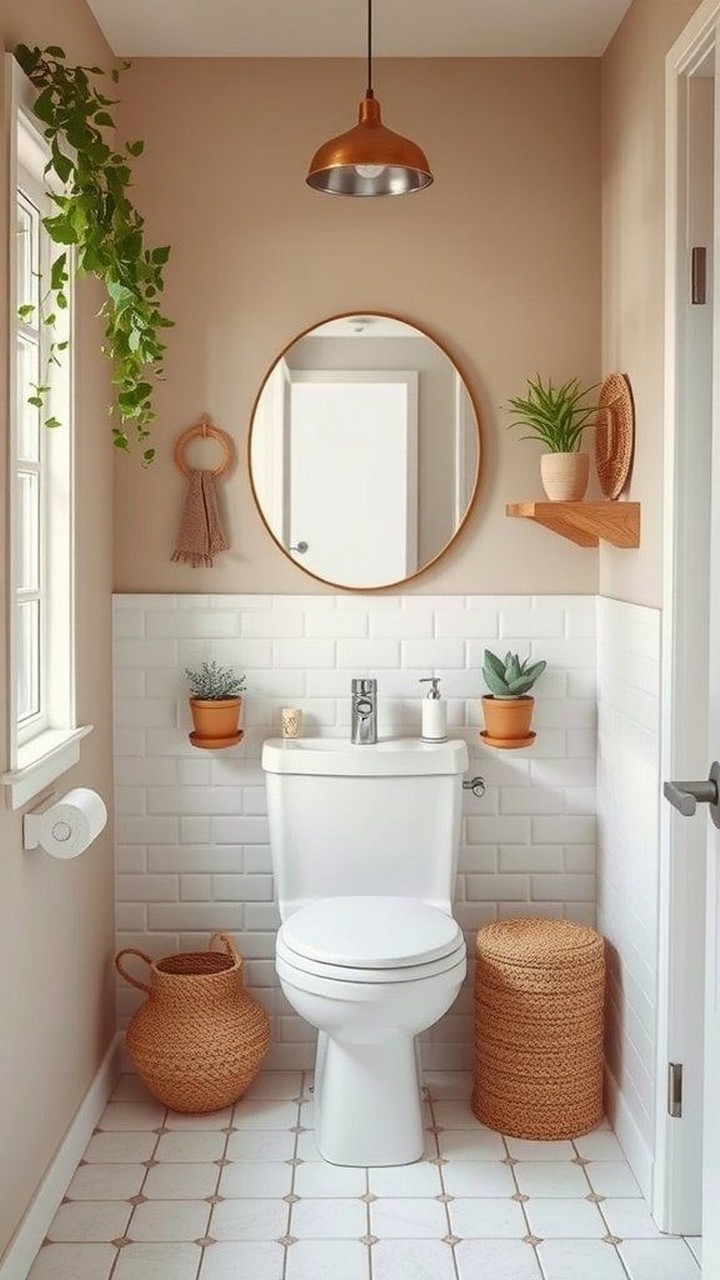
Start your minimalist transformation with a carefully chosen neutral color scheme. White, soft grays, warm beiges, and gentle off-whites create visual continuity and reflect light effectively. These colors work harmoniously together, making walls appear to recede and creating the illusion of expanded space. Consider using different tones of the same color family rather than stark contrasts to maintain visual flow throughout the room.
2. Install Floating Vanities
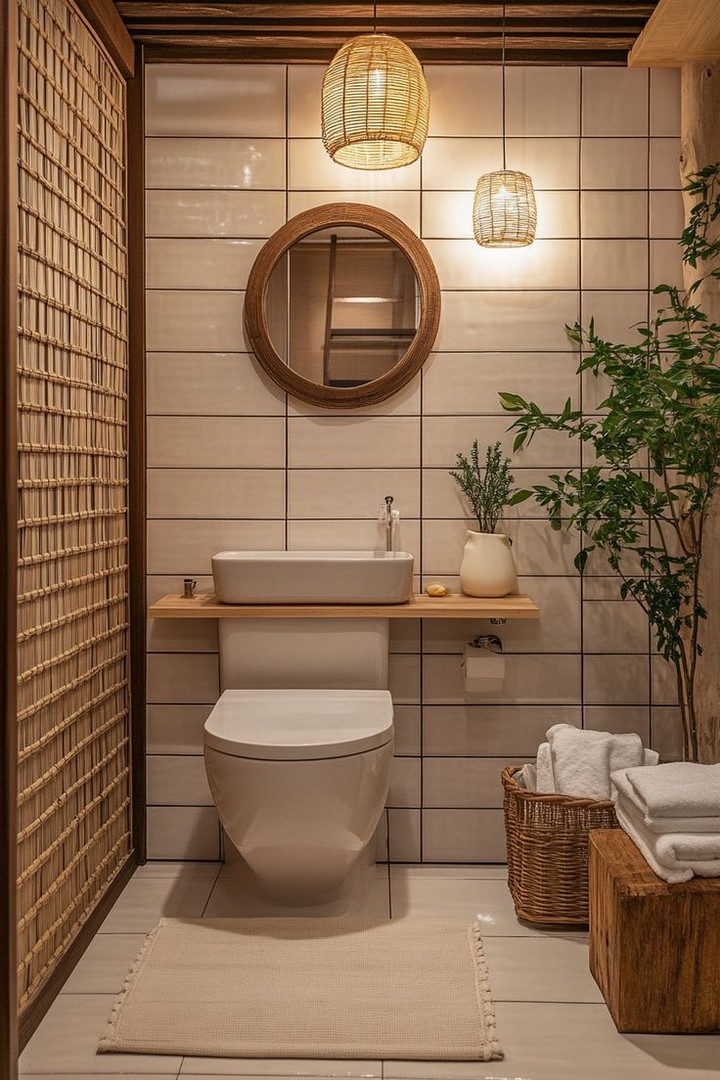
Floating vanities are game-changers in small bathroom design. By lifting the vanity off the floor, you create visual breathing room that makes the space feel larger. The exposed floor area tricks the eye into perceiving more square footage, while the clean lines maintain the minimalist aesthetic. Choose vanities with integrated handles or push-to-open mechanisms to eliminate unnecessary hardware details.
3. Maximize Natural Light
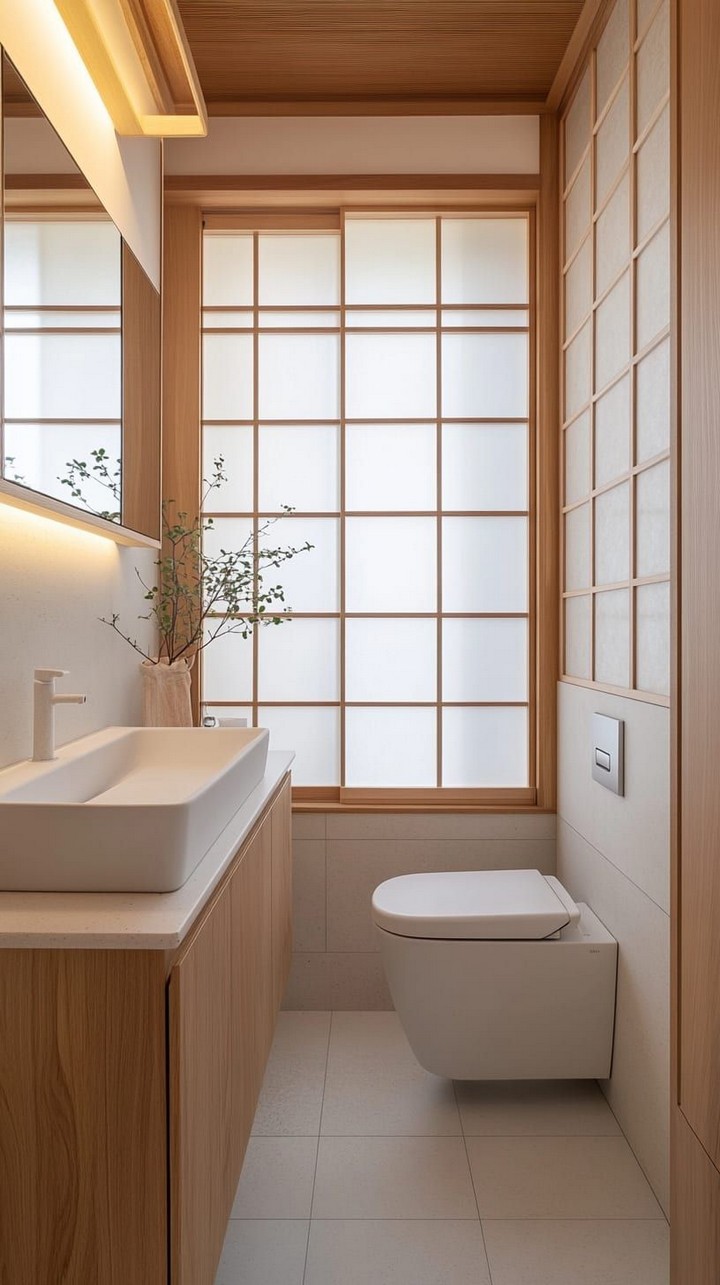
Natural light is your greatest ally in creating an airy, spacious feel. Remove heavy window treatments in favor of frosted glass films or simple cellular shades that provide privacy while allowing light to filter through. If privacy isn’t a concern, consider leaving windows completely unadorned. For bathrooms without windows, install larger mirrors strategically to reflect artificial light throughout the space.
4. Choose Large Format Tiles
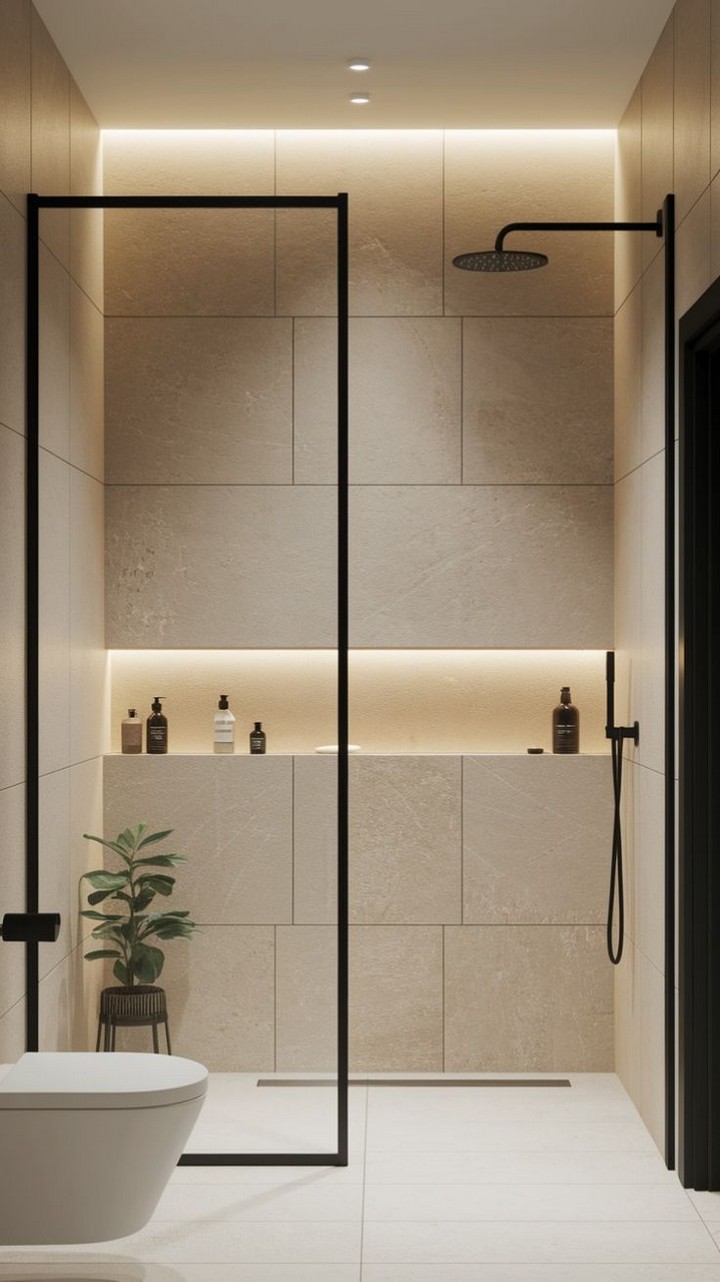
Large tiles create fewer grout lines, resulting in a cleaner, more seamless appearance. Consider 12×24 inch or even larger format tiles for both walls and floors. When installed with minimal grout lines, these tiles create uninterrupted surfaces that make walls appear taller and rooms feel more expansive. Opt for tiles in neutral tones with subtle textures rather than busy patterns.
5. Implement Hidden Storage Solutions
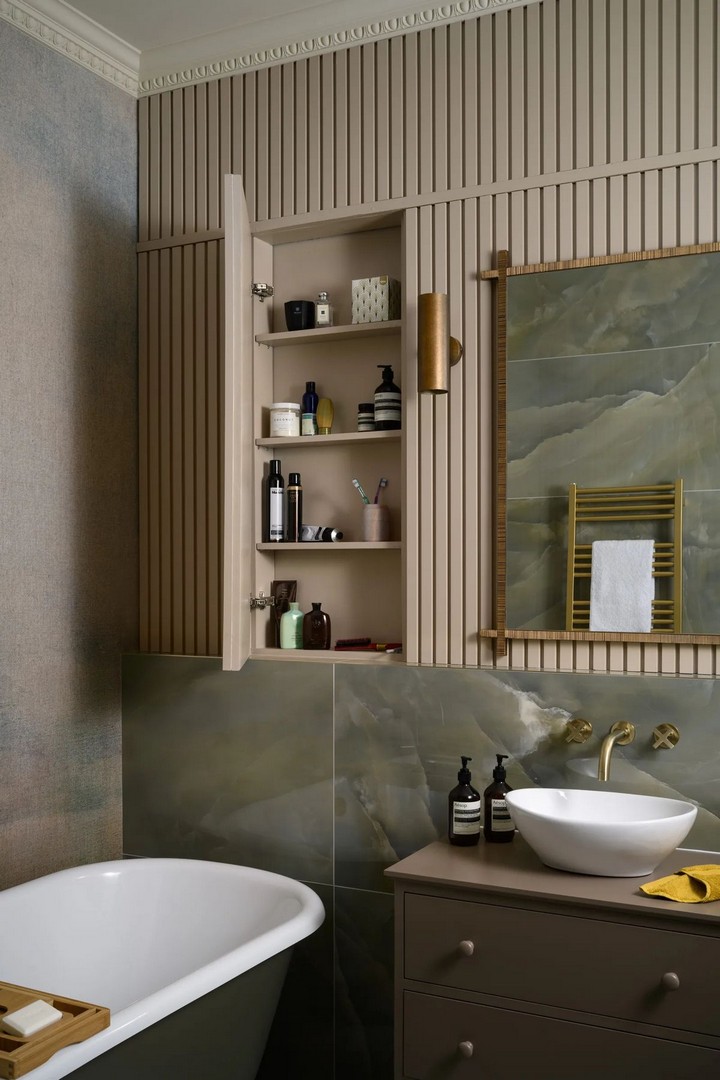
Minimalism doesn’t mean sacrificing functionality. Built-in niches, recessed medicine cabinets, and vanities with concealed storage keep essentials organized while maintaining clean surfaces. Consider toe-kick drawers beneath vanities or narrow pull-out cabinets that utilize otherwise wasted spaces. The key is ensuring storage solutions blend seamlessly with the overall design.
6. Select Statement Lighting Fixtures
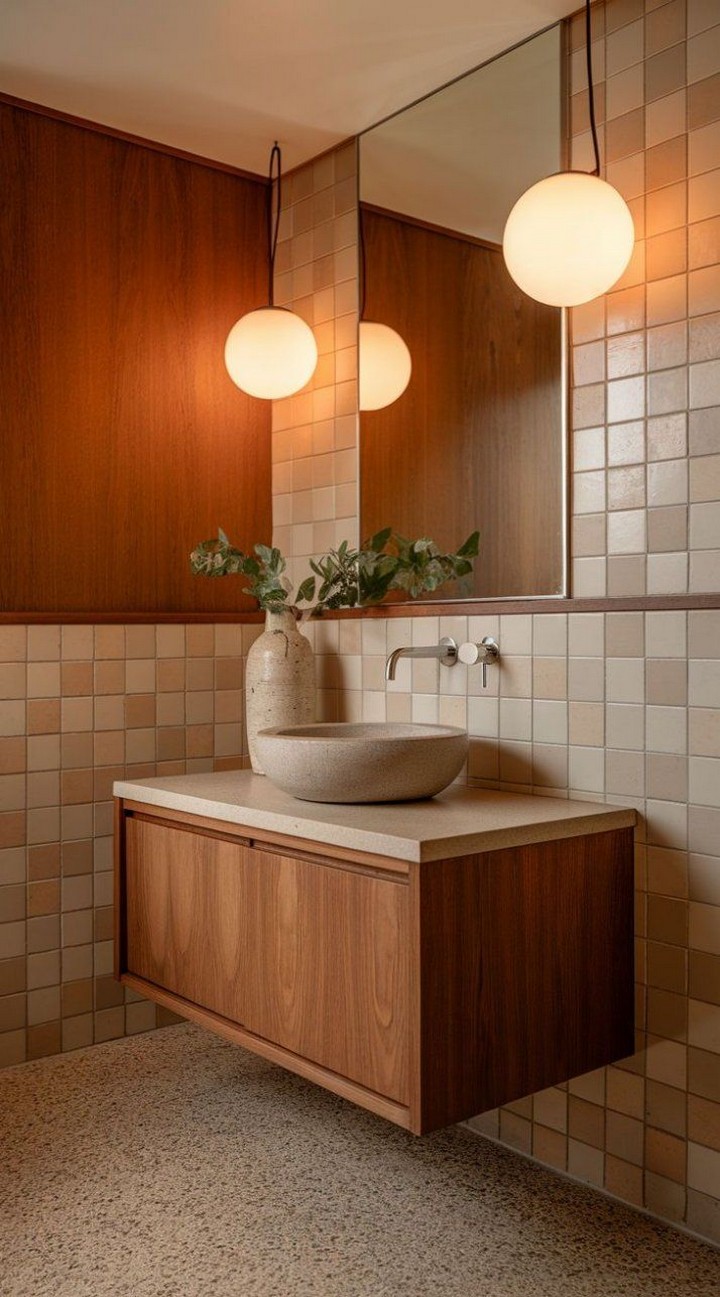
In minimalist design, every element must earn its place. Choose lighting fixtures that serve as both functional elements and design statements. Pendant lights with clean geometric shapes, sleek vanity bars, or modern chandeliers can add visual interest without cluttering the space. Ensure fixtures provide adequate task lighting while contributing to the overall aesthetic.
7. Install Wall-Mounted Faucets
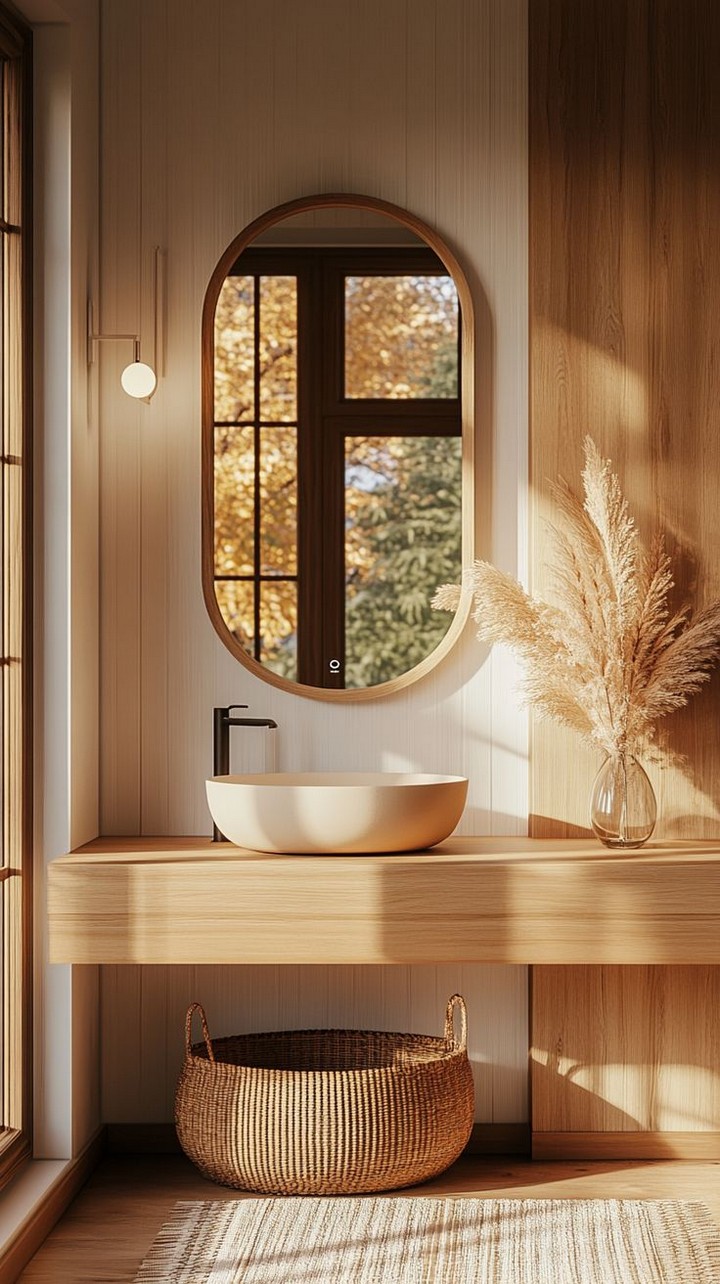
Wall-mounted faucets create cleaner countertop lines and allow for more creative sink placement. This approach eliminates the visual interruption of deck-mounted fixtures and makes countertops easier to clean. The plumbing becomes part of the wall’s design, creating a sophisticated, hotel-like appearance that’s characteristic of high-end minimalist bathrooms.
8. Incorporate Natural Materials
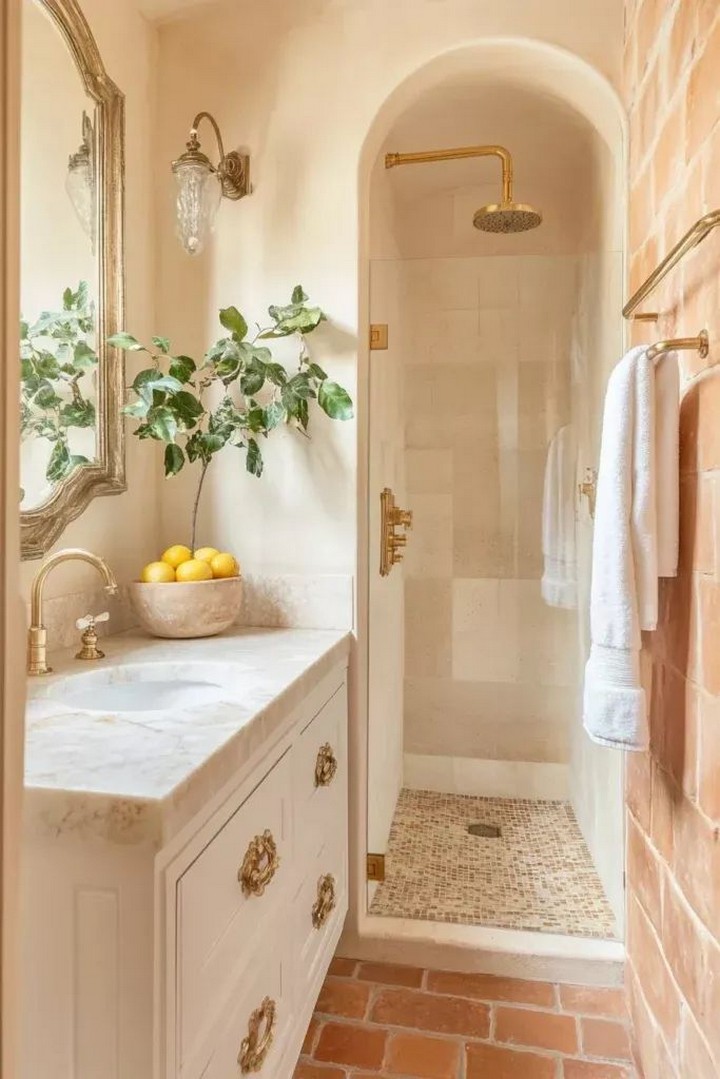
Natural materials like wood, stone, and bamboo add warmth to minimalist spaces while maintaining the clean aesthetic. A teak bath mat, limestone countertop, or bamboo storage basket introduces organic textures that prevent the space from feeling cold or sterile. Use these materials sparingly as accents rather than dominant features.
9. Choose Frameless Glass Shower Enclosures
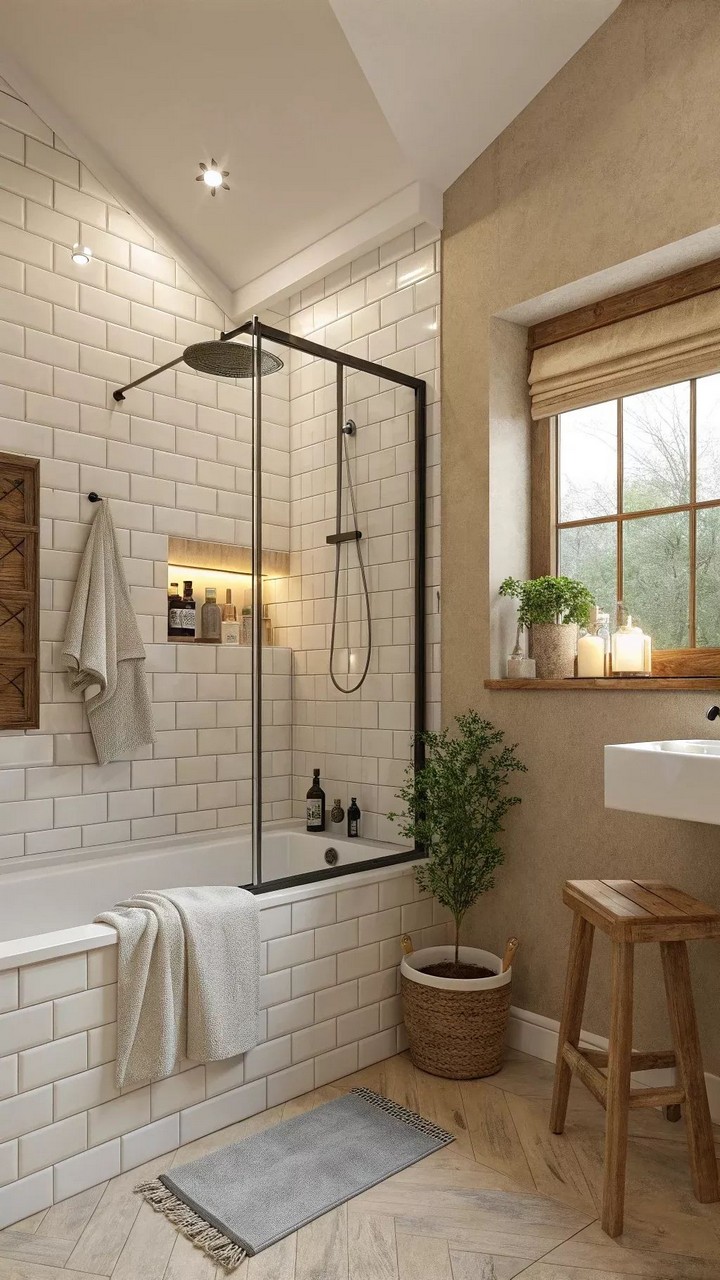
Frameless glass shower doors or panels create unobstructed sightlines that make bathrooms feel larger and more open. The transparency doesn’t compete with other design elements, while the lack of frames eliminates visual clutter. This solution works particularly well in small bathrooms where every inch of visual space counts.
10. Optimize Vertical Storage
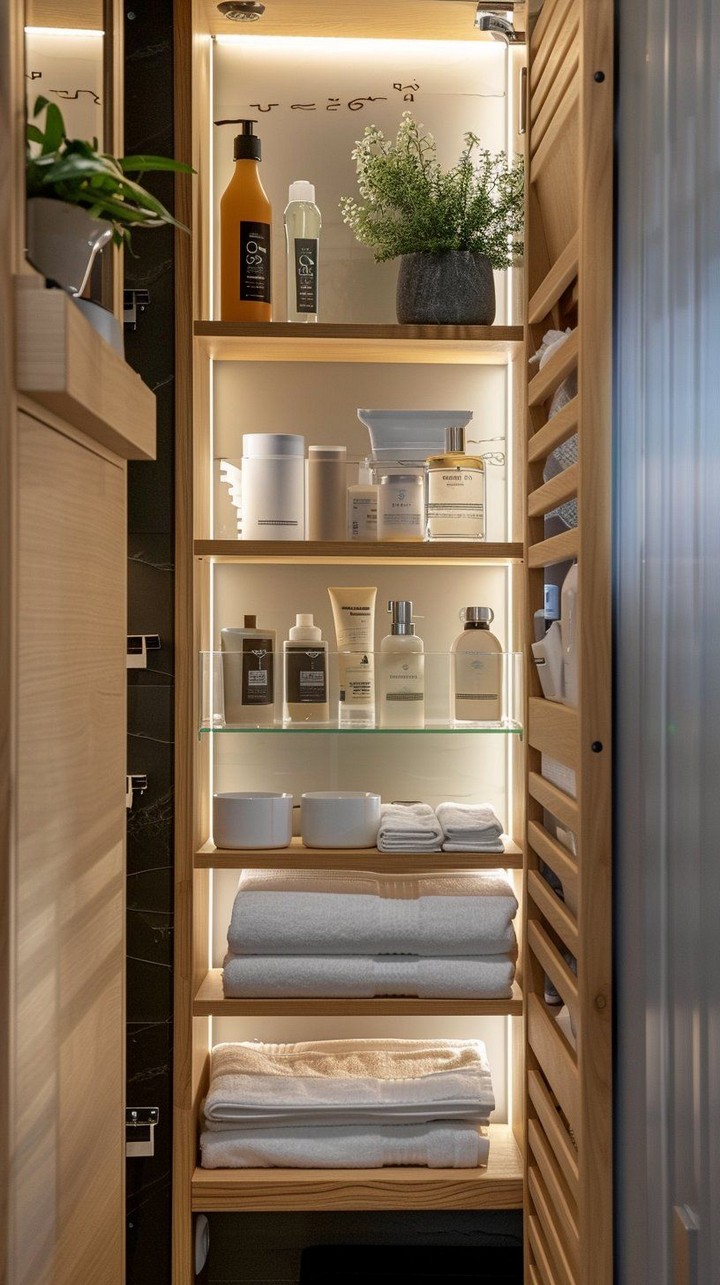
Think beyond traditional storage methods by utilizing vertical wall space. Tall, narrow cabinets, floating shelves, or ladder-style towel racks draw the eye upward, creating the illusion of height. Install storage elements that reach toward the ceiling to maximize capacity while maintaining the clean lines essential to minimalist design.
11. Invest in High-Quality Basics
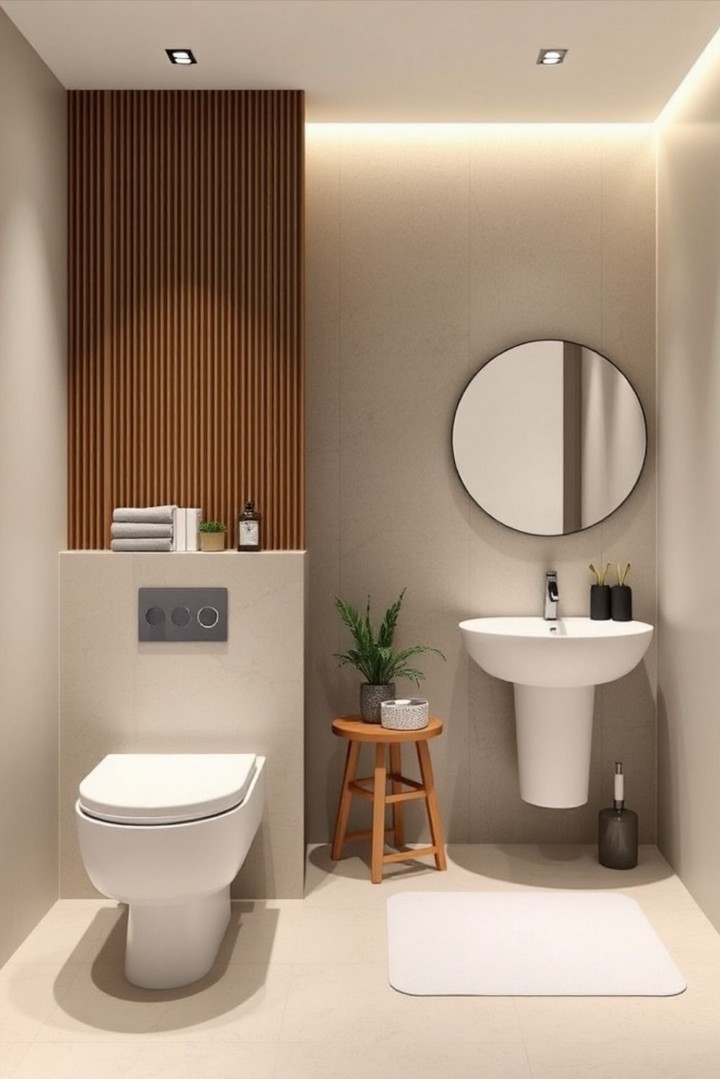
Minimalism emphasizes quality over quantity. Choose fewer, higher-quality fixtures, finishes, and accessories that will stand the test of time both functionally and aesthetically. A well-made faucet, durable countertop material, or premium paint will look better and last longer than budget alternatives, ultimately supporting the minimalist principle of intentional consumption.
12. Create Visual Continuity
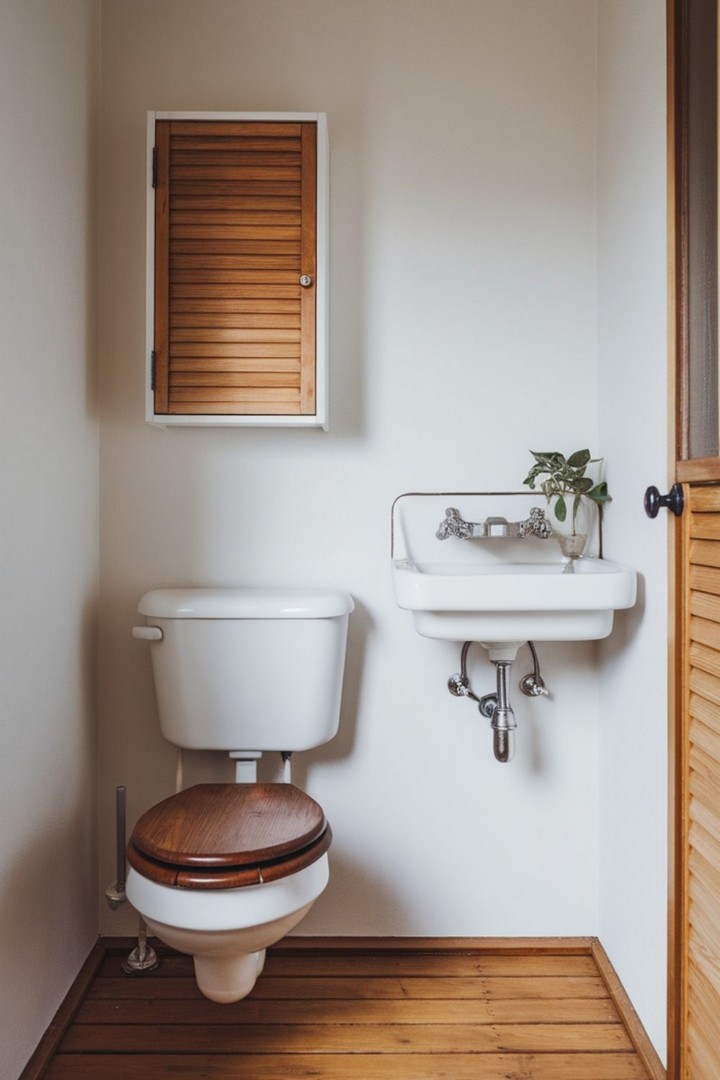
Maintain consistency in materials, finishes, and color temperatures throughout the space. Use the same metal finish for all fixtures, select tiles that complement each other, and ensure lighting has consistent color temperature. This cohesive approach creates visual harmony that makes small spaces feel more unified and, consequently, larger.
13. Eliminate Visual Clutter
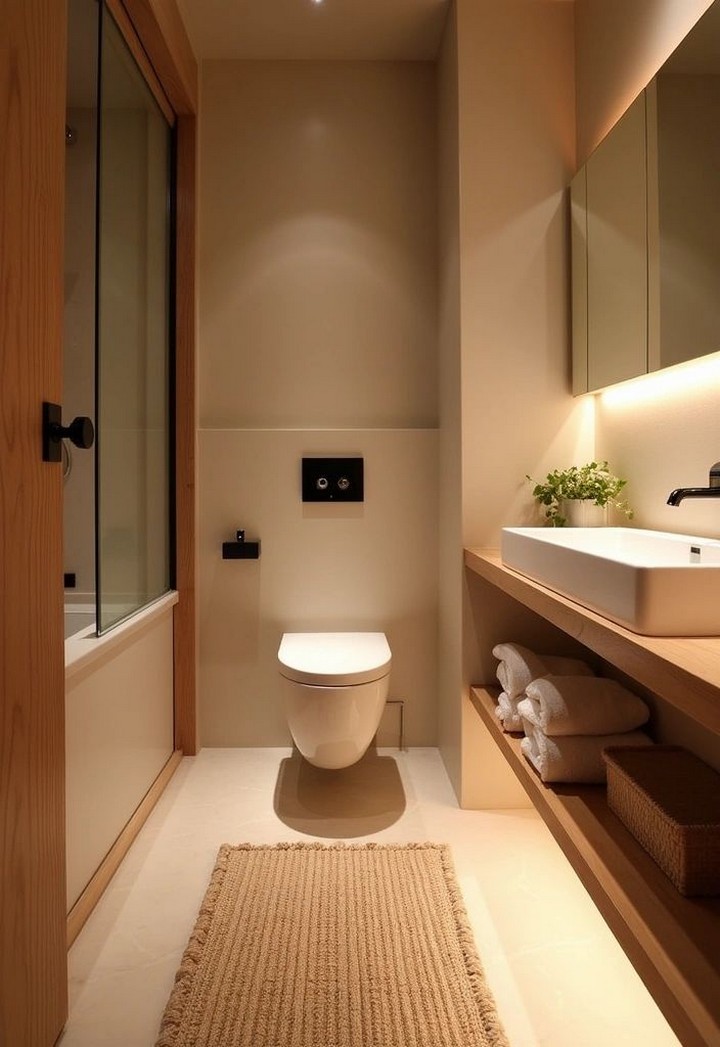
Keep countertops, shelves, and surfaces as clear as possible. Store toiletries in cabinets or drawers, choose soap dispensers that mount on walls, and select towel bars over towel rings to maintain cleaner lines. Each item in view should serve a purpose and contribute to the overall aesthetic rather than detract from it.
14. Use Mirrors Strategically
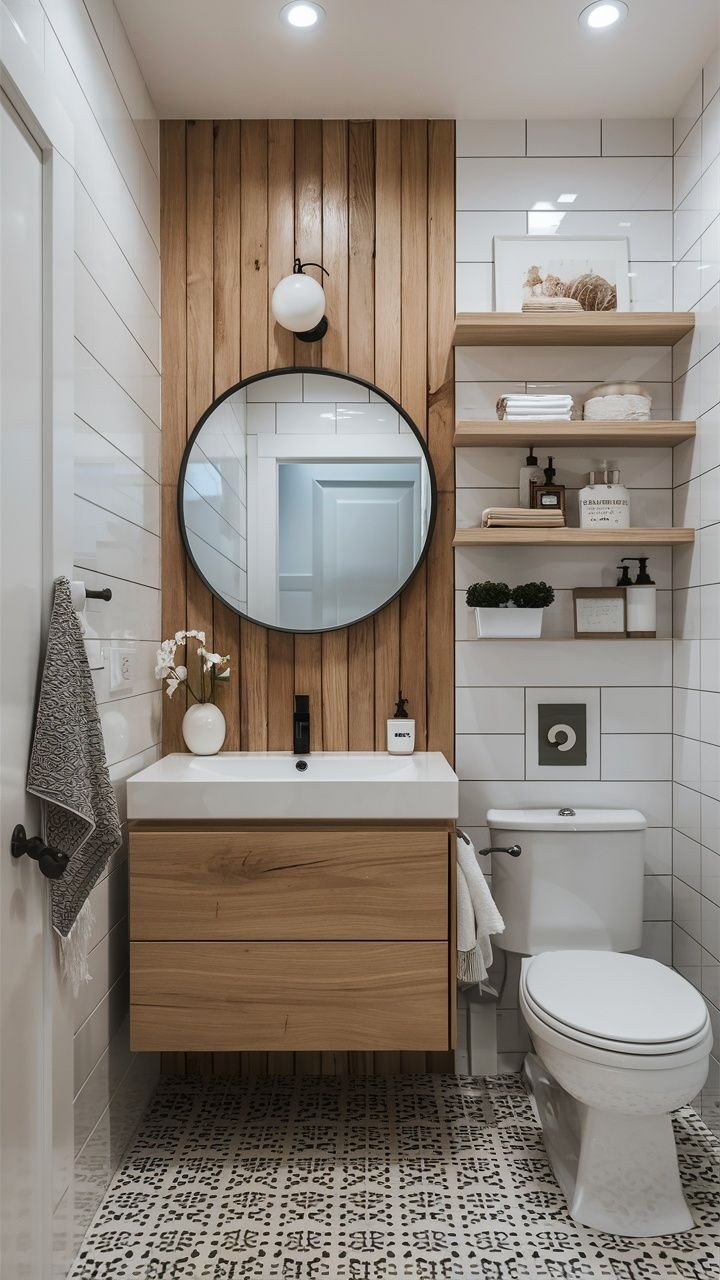
Mirrors are essential tools in small bathroom design, but their placement and size matter significantly. A large mirror above the vanity creates the illusion of depth, while mirrors on adjacent walls can multiply light and space. Consider mirrors with integrated lighting or those that extend from wall to wall for maximum impact.
15. Choose Compact Fixtures
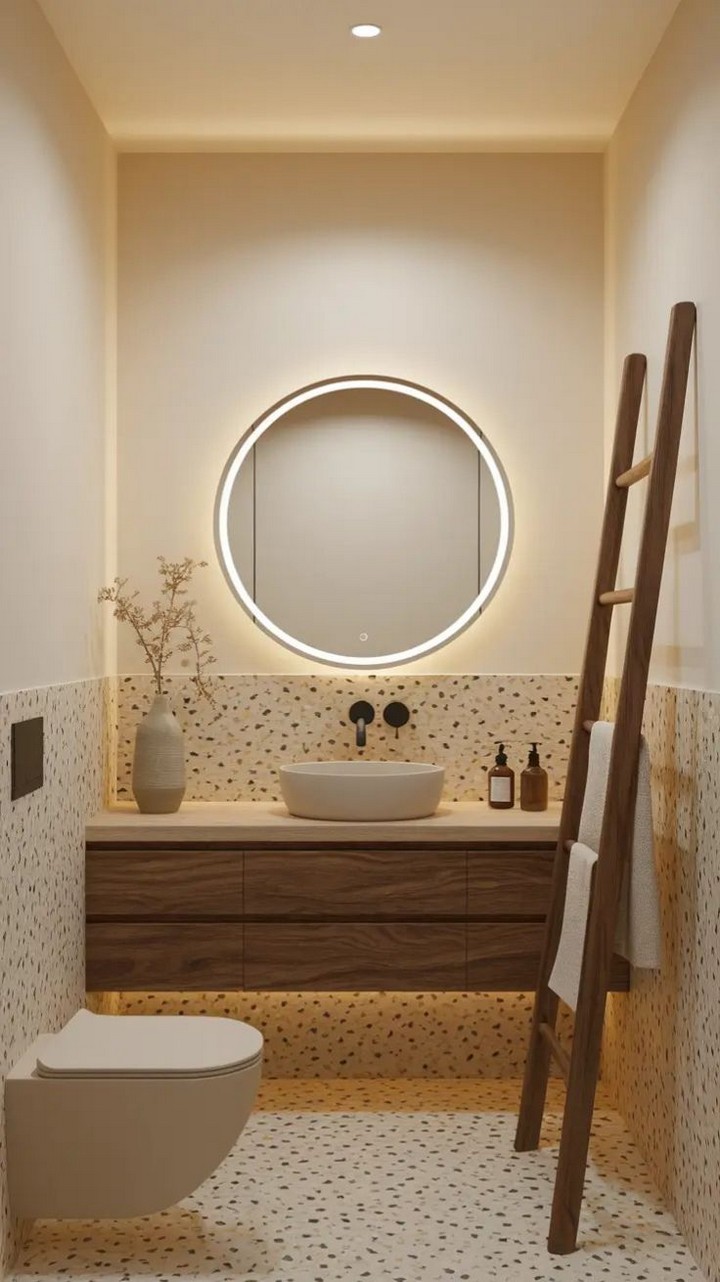
Select toilets, sinks, and other fixtures specifically designed for small spaces without compromising on style. Wall-hung toilets save floor space and create cleaner lines, while compact vanities can still provide adequate storage and counter space. Corner sinks utilize otherwise awkward spaces effectively.
16. Implement a Monochromatic Scheme
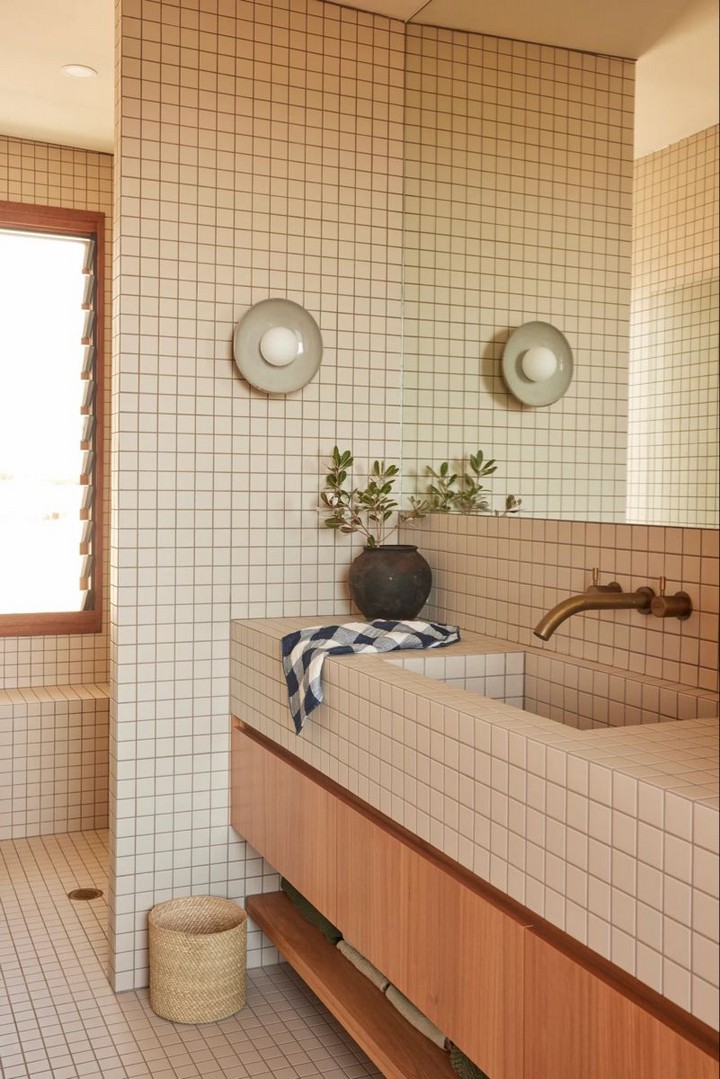
Using various shades and tones of a single color creates sophistication while making spaces appear larger. A monochromatic gray scheme, for example, can range from light dove gray walls to charcoal accents, creating depth without visual fragmentation. This approach is particularly effective in small bathrooms where color diversity might feel overwhelming.
17. Focus on Clean Lines
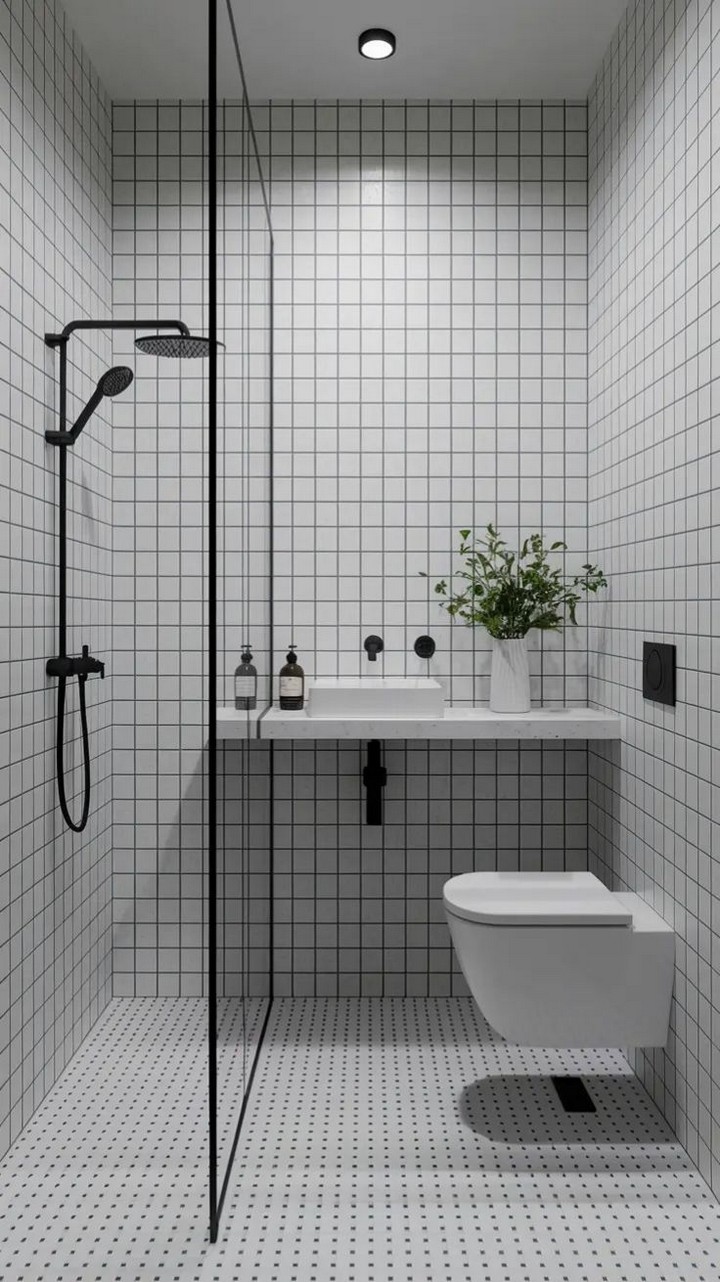
Every element in a minimalist bathroom should feature clean, simple lines. Avoid ornate details, excessive curves, or decorative elements that don’t serve a functional purpose. Choose rectangular sinks over oval ones, select fixtures with geometric shapes, and opt for hardware with simple, linear designs.
18. Maintain Consistent Proportions
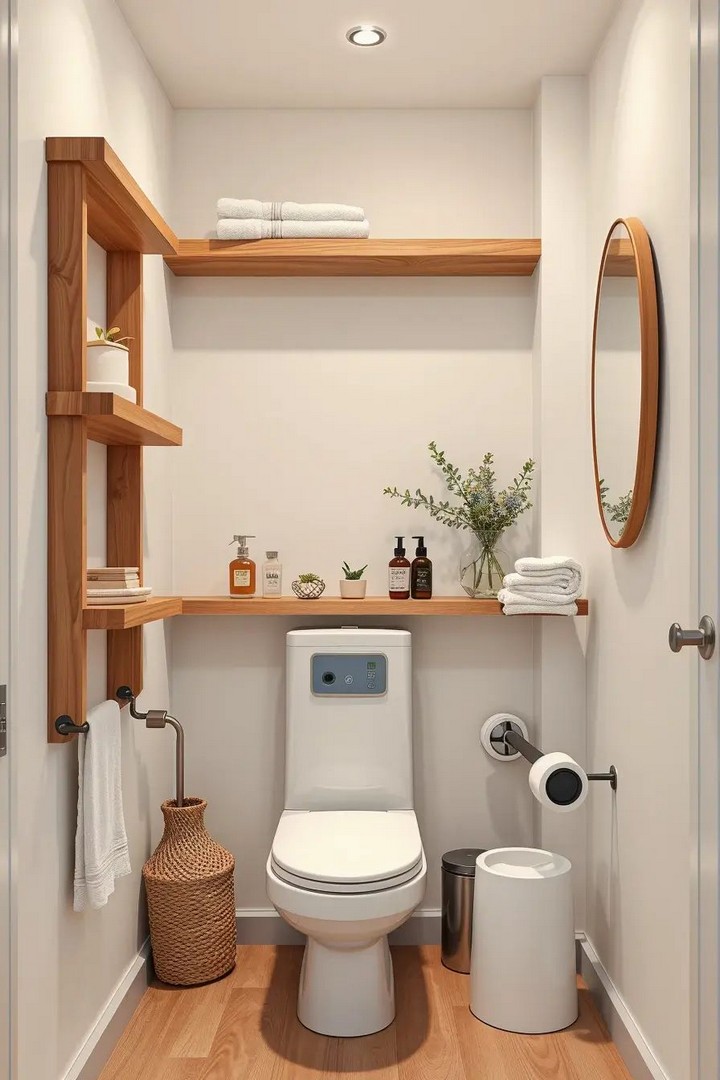
Ensure all elements in the bathroom relate to each other proportionally. Oversized fixtures can overwhelm small spaces, while tiny elements may appear insignificant. Strike a balance where each component feels appropriately scaled for both the room size and its relationship to other elements.
19. Add Single Statement Pieces
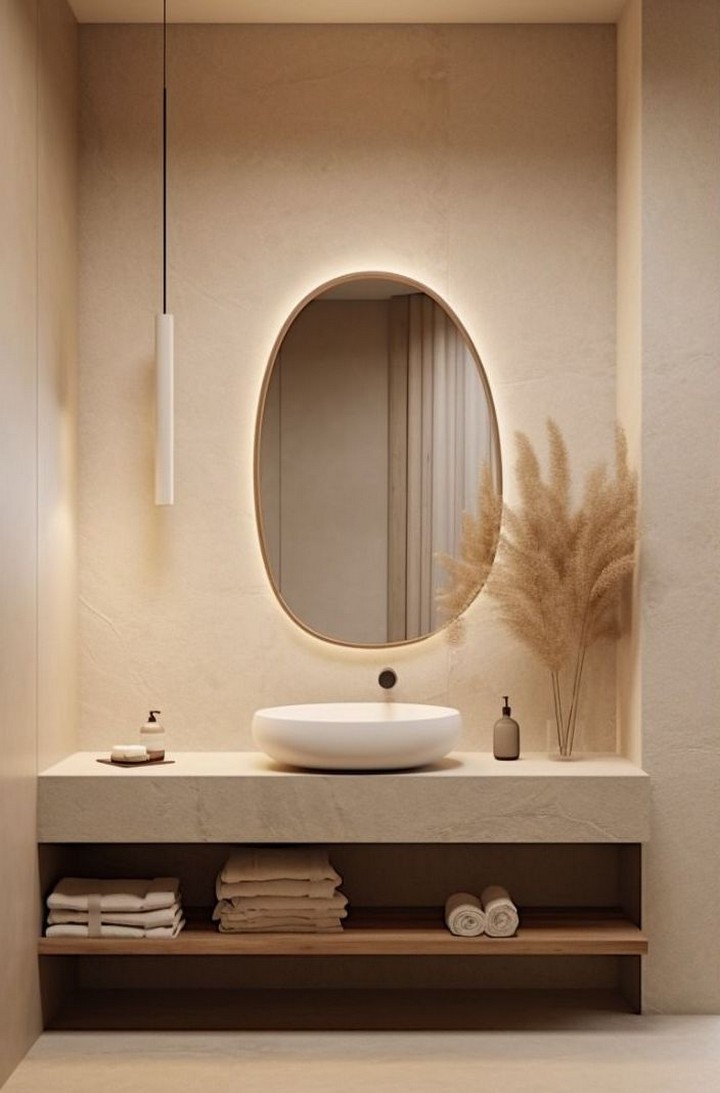
While minimalism emphasizes restraint, one carefully chosen statement piece can elevate the entire design. This might be a unique vessel sink, an architectural light fixture, or a piece of natural stone. The key is choosing only one focal point that aligns with the overall aesthetic while providing visual interest.
20. Prioritize Functionality
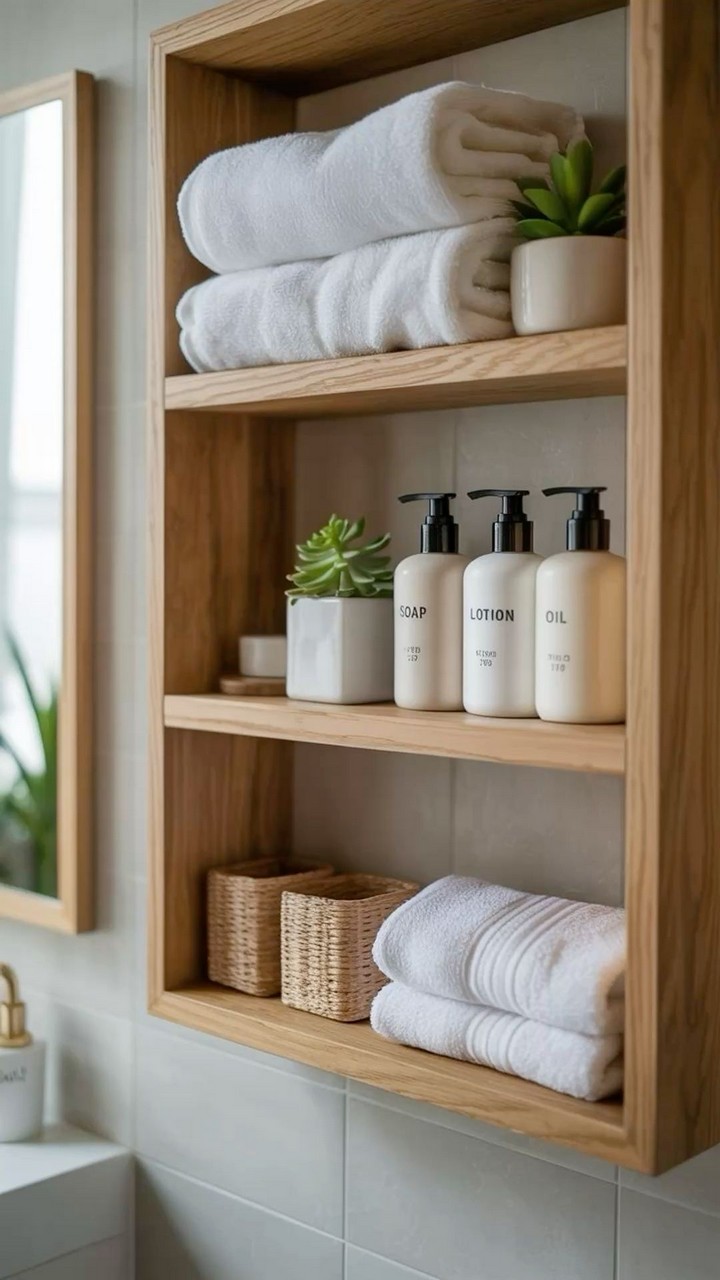
Every design decision should enhance the bathroom’s functionality. Beautiful design means nothing if daily routines become more difficult. Ensure adequate storage for necessities, sufficient lighting for grooming tasks, and comfortable clearances for movement. The most successful minimalist bathrooms seamlessly blend form and function.
The beauty of minimalist design lies in its timelessness. While trends come and go, the principles of clean lines, functional beauty, and intentional living remain constant. By implementing these ideas thoughtfully, you’ll create a bathroom that not only meets your immediate needs but continues to provide satisfaction and serenity for years to come.
Ready to transform your small bathroom into a minimalist haven? We’d love to hear about your renovation plans and see your before-and-after photos! Share your favorite ideas from this list in the comments below, and don’t forget to bookmark this article for future reference. For more home design inspiration and practical renovation tips, explore our related articles on small space solutions and sustainable home design. Your perfect minimalist bathroom sanctuary awaits!

